Akira Furui
Classification of Carotid Plaque with Jellyfish Sign Through Convolutional and Recurrent Neural Networks Utilizing Plaque Surface Edges
Jun 27, 2024
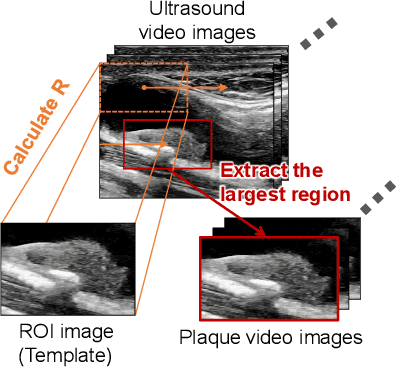


Abstract:In carotid arteries, plaque can develop as localized elevated lesions. The Jellyfish sign, marked by fluctuating plaque surfaces with blood flow pulsation, is a dynamic characteristic of these plaques that has recently attracted attention. Detecting this sign is vital, as it is often associated with cerebral infarction. This paper proposes an ultrasound video-based classification method for the Jellyfish sign, using deep neural networks. The proposed method first preprocesses carotid ultrasound videos to separate the movement of the vascular wall from plaque movements. These preprocessed videos are then combined with plaque surface information and fed into a deep learning model comprising convolutional and recurrent neural networks, enabling the efficient classification of the Jellyfish sign. The proposed method was verified using ultrasound video images from 200 patients. Ablation studies demonstrated the effectiveness of each component of the proposed method.
Bayesian Approach for Adaptive EMG Pattern Classification Via Semi-Supervised Sequential Learning
Sep 30, 2023Abstract:Intuitive human-machine interfaces may be developed using pattern classification to estimate executed human motions from electromyogram (EMG) signals generated during muscle contraction. The continual use of EMG-based interfaces gradually alters signal characteristics owing to electrode shift and muscle fatigue, leading to a gradual decline in classification accuracy. This paper proposes a Bayesian approach for adaptive EMG pattern classification using semi-supervised sequential learning. The proposed method uses a Bayesian classification model based on Gaussian distributions to predict the motion class and estimate its confidence. Pseudo-labels are subsequently assigned to data with high-prediction confidence, and the posterior distributions of the model are sequentially updated within the framework of Bayesian updating, thereby achieving adaptive motion recognition to alterations in signal characteristics over time. Experimental results on six healthy adults demonstrated that the proposed method can suppress the degradation of classification accuracy over time and outperforms conventional methods. These findings demonstrate the validity of the proposed approach and its applicability to practical EMG-based control systems.
Evaluating Classifier Confidence for Surface EMG Pattern Recognition
Apr 12, 2023Abstract:Surface electromyogram (EMG) can be employed as an interface signal for various devices and software via pattern recognition. In EMG-based pattern recognition, the classifier should not only be accurate, but also output an appropriate confidence (i.e., probability of correctness) for its prediction. If the confidence accurately reflects the likelihood of true correctness, then it will be useful in various application tasks, such as motion rejection and online adaptation. The aim of this paper is to identify the types of classifiers that provide higher accuracy and better confidence in EMG pattern recognition. We evaluate the performance of various discriminative and generative classifiers on four EMG datasets, both visually and quantitatively. The analysis results show that while a discriminative classifier based on a deep neural network exhibits high accuracy, it outputs a confidence that differs from true probabilities. By contrast, a scale mixture model-based classifier, which is a generative classifier that can account for uncertainty in EMG variance, exhibits superior performance in terms of both accuracy and confidence.
Automated Classification of General Movements in Infants Using a Two-stream Spatiotemporal Fusion Network
Jul 04, 2022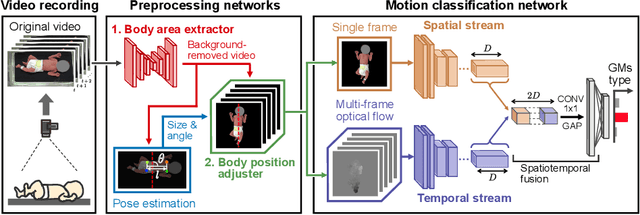
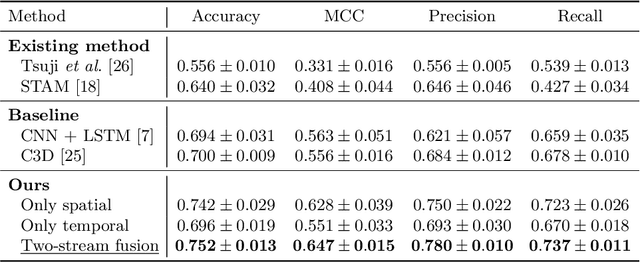
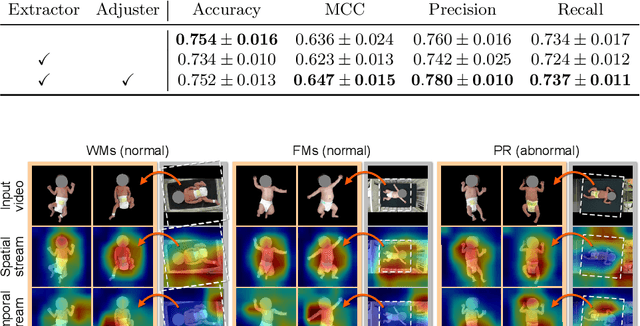
Abstract:The assessment of general movements (GMs) in infants is a useful tool in the early diagnosis of neurodevelopmental disorders. However, its evaluation in clinical practice relies on visual inspection by experts, and an automated solution is eagerly awaited. Recently, video-based GMs classification has attracted attention, but this approach would be strongly affected by irrelevant information, such as background clutter in the video. Furthermore, for reliability, it is necessary to properly extract the spatiotemporal features of infants during GMs. In this study, we propose an automated GMs classification method, which consists of preprocessing networks that remove unnecessary background information from GMs videos and adjust the infant's body position, and a subsequent motion classification network based on a two-stream structure. The proposed method can efficiently extract the essential spatiotemporal features for GMs classification while preventing overfitting to irrelevant information for different recording environments. We validated the proposed method using videos obtained from 100 infants. The experimental results demonstrate that the proposed method outperforms several baseline models and the existing methods.
A Time-Series Scale Mixture Model of EEG with a Hidden Markov Structure for Epileptic Seizure Detection
Nov 12, 2021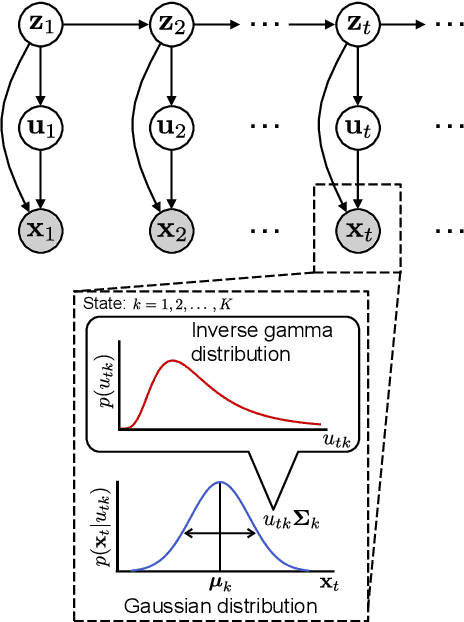
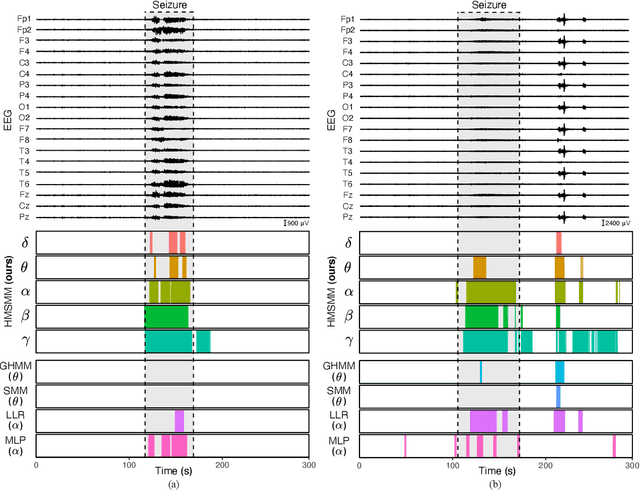
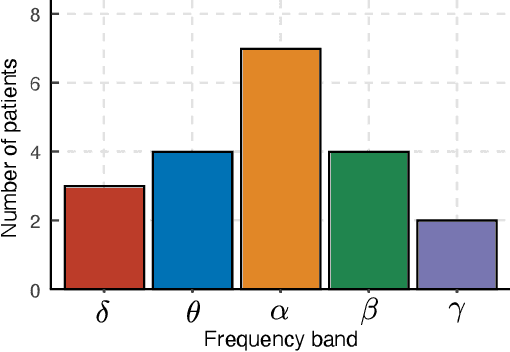
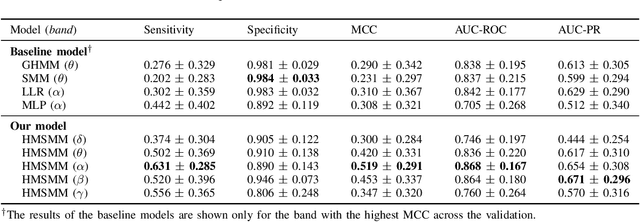
Abstract:In this paper, we propose a time-series stochastic model based on a scale mixture distribution with Markov transitions to detect epileptic seizures in electroencephalography (EEG). In the proposed model, an EEG signal at each time point is assumed to be a random variable following a Gaussian distribution. The covariance matrix of the Gaussian distribution is weighted with a latent scale parameter, which is also a random variable, resulting in the stochastic fluctuations of covariances. By introducing a latent state variable with a Markov chain in the background of this stochastic relationship, time-series changes in the distribution of latent scale parameters can be represented according to the state of epileptic seizures. In an experiment, we evaluated the performance of the proposed model for seizure detection using EEGs with multiple frequency bands decomposed from a clinical dataset. The results demonstrated that the proposed model can detect seizures with high sensitivity and outperformed several baselines.
EMG Pattern Recognition via Bayesian Inference with Scale Mixture-Based Stochastic Generative Models
Jul 21, 2021


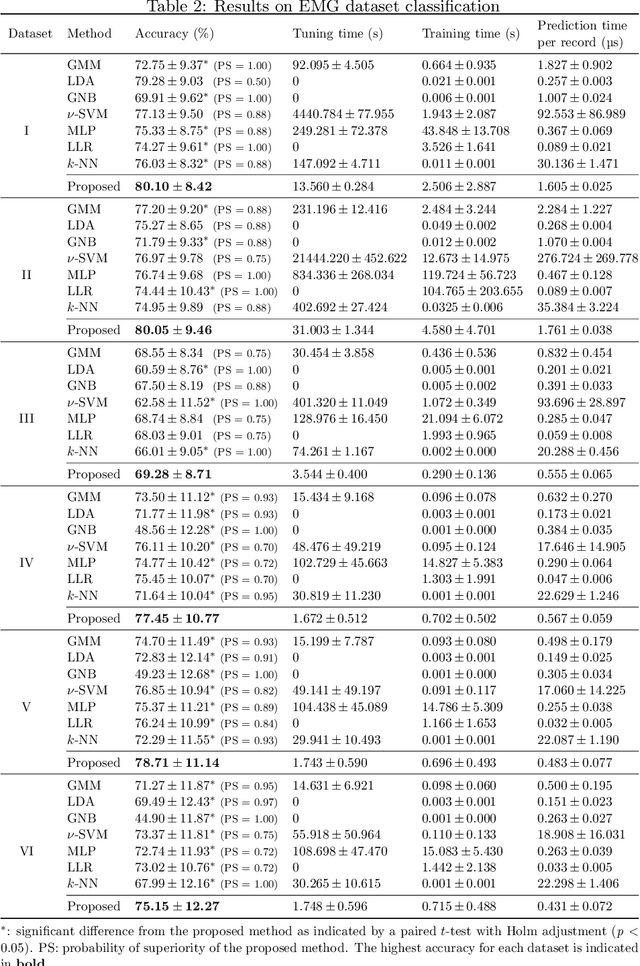
Abstract:Electromyogram (EMG) has been utilized to interface signals for prosthetic hands and information devices owing to its ability to reflect human motion intentions. Although various EMG classification methods have been introduced into EMG-based control systems, they do not fully consider the stochastic characteristics of EMG signals. This paper proposes an EMG pattern classification method incorporating a scale mixture-based generative model. A scale mixture model is a stochastic EMG model in which the EMG variance is considered as a random variable, enabling the representation of uncertainty in the variance. This model is extended in this study and utilized for EMG pattern classification. The proposed method is trained by variational Bayesian learning, thereby allowing the automatic determination of the model complexity. Furthermore, to optimize the hyperparameters of the proposed method with a partial discriminative approach, a mutual information-based determination method is introduced. Simulation and EMG analysis experiments demonstrated the relationship between the hyperparameters and classification accuracy of the proposed method as well as the validity of the proposed method. The comparison using public EMG datasets revealed that the proposed method outperformed the various conventional classifiers. These results indicated the validity of the proposed method and its applicability to EMG-based control systems. In EMG pattern recognition, a classifier based on a generative model that reflects the stochastic characteristics of EMG signals can outperform the conventional general-purpose classifier.
Biomimetic Control of Myoelectric Prosthetic Hand Based on a Lambda-type Muscle Model
May 29, 2021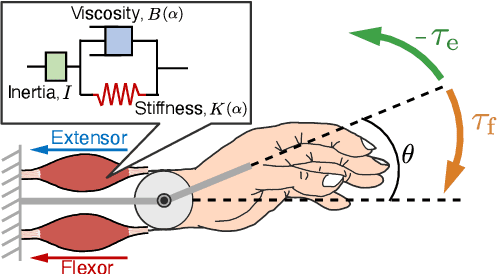
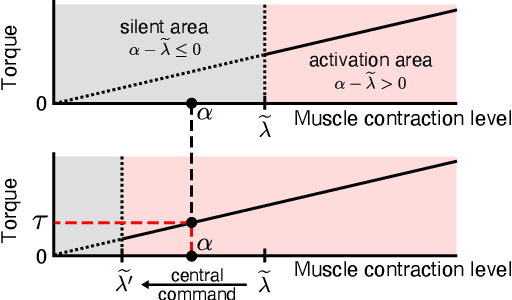
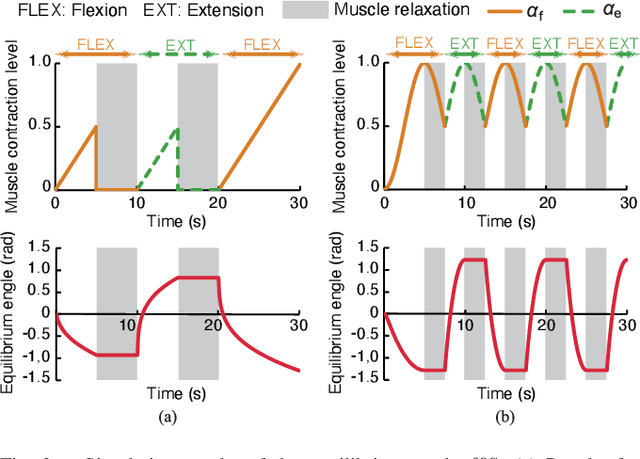
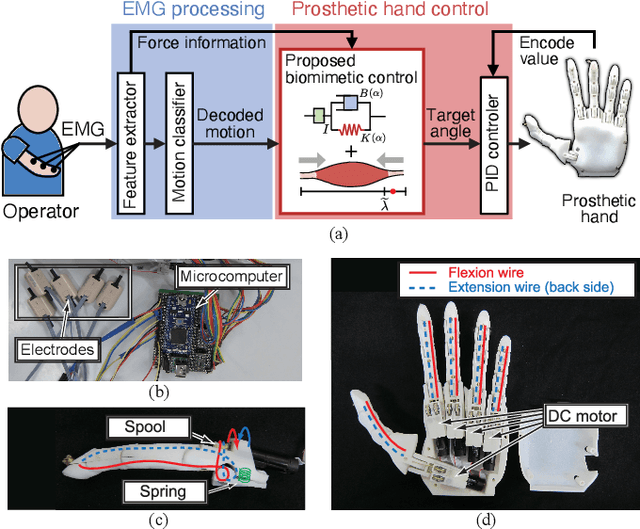
Abstract:Myoelectric prosthetic hands are intended to replace the function of the amputee's lost arm. Therefore, developing robotic prosthetics that can mimic not only the appearance and functionality of humans but also characteristics unique to human movements is paramount. Although the impedance model was proposed to realize biomimetic control, this model cannot replicate the characteristics of human movements effectively because the joint angle always converges to the equilibrium position during muscle relaxation. This paper proposes a novel biomimetic control method for myoelectric prosthetic hands integrating the impedance model with the concept of the $\lambda$-type muscle model. The proposed method can dynamically control the joint equilibrium position, according to the state of the muscle, and can maintain the joint angle naturally during muscle relaxation. The effectiveness of the proposed method is evaluated through simulations and a series of experiments on non-amputee participants. The experimental results, based on comparison with the actual human joint angles, suggest that the proposed method has a better correlation with the actual human motion than the conventional methods. Additionally, the control experiments showed that the proposed method could achieve a natural prosthetic hand movement similar to that of a human, thereby allowing voluntary hand opening and closing movements.
 Add to Chrome
Add to Chrome Add to Firefox
Add to Firefox Add to Edge
Add to Edge